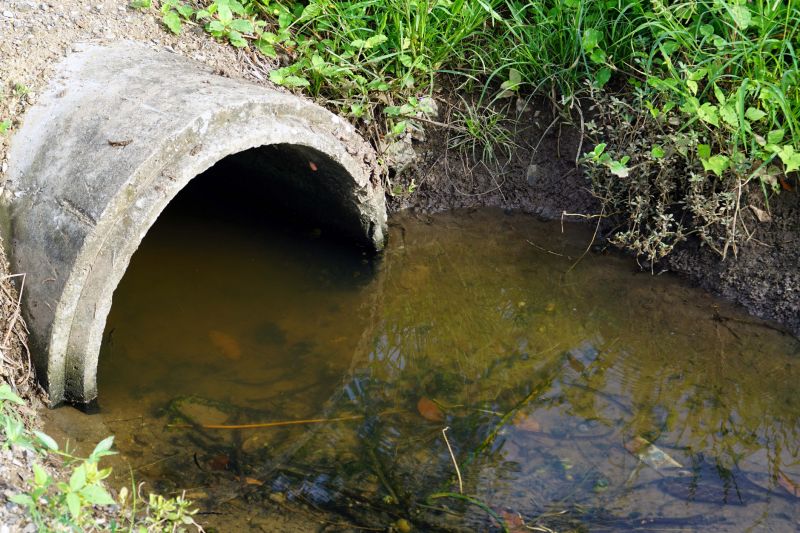Top Products For Culvert Installation Service Professionals
Explore essential tools and equipment that ensure efficient and reliable culvert installation for contractors and service providers.
 Culvert installation is a critical component of infrastructure development, drainage management, and land development projects. Properly selected products ensure that culverts function effectively, withstand environmental pressures, and integrate seamlessly into the surrounding landscape. From various pipe materials to specialized fittings and accessories, the range of products available caters to diverse project requirements. Choosing the right components involves understanding factors such as load capacity, material durability, and compatibility with existing infrastructure.
Culvert installation is a critical component of infrastructure development, drainage management, and land development projects. Properly selected products ensure that culverts function effectively, withstand environmental pressures, and integrate seamlessly into the surrounding landscape. From various pipe materials to specialized fittings and accessories, the range of products available caters to diverse project requirements. Choosing the right components involves understanding factors such as load capacity, material durability, and compatibility with existing infrastructure.
Top Overall Option
Durable Pipe System
A versatile and robust pipe system designed for a range of culvert applications, offering high resistance to environmental stressors and ease of installation. Its material composition ensures longevity and reliable performance across different project types.
Types of Products For Culvert Installation Service
Corrugated Metal Pipes
Commonly used for their strength and flexibility, suitable for various load conditions.
High-Density Polyethylene Pipes
Lightweight and corrosion-resistant, ideal for drainage and water conveyance.
Reinforced Concrete Pipes
Known for durability and high load capacity, often used in roadway crossings.
PVC Pipes
Flexible and easy to install, suitable for smaller drainage applications.
Flexible Couplings and Fittings
Connectors and adapters that allow for seamless pipe joining and adjustments.
Bedding Materials
Crushed stone or gravel used to support and stabilize culvert pipes during installation.
End Caps and Flanges
Seals and connectors that close off or join culvert sections securely.
Support Sleeves and Hangers
Provide additional stability and support for culvert pipes, especially in challenging terrains.
Drainage Inlets and Outlets
Components that facilitate water entry and exit, preventing erosion and flooding.
Sediment and Debris Barriers
Prevent debris accumulation and protect culvert systems from blockages.
Vortex Flow Controls
Devices that regulate water flow within culverts to prevent erosion and manage water velocity.
Waterproof Coatings and Sealants
Protect culvert surfaces from water infiltration and extend lifespan.
Excavation and Shoring Equipment
Tools and supports necessary for safe and efficient installation processes.
Traffic Management Barriers
Safety barriers to control traffic during culvert installation projects.
Surveying and Alignment Tools
Equipment to ensure precise placement and alignment of culvert components.
Popular Choices
Widely used for their strength and adaptability in various installation scenarios.
Favored for lightweight and corrosion-resistant properties, suitable for many drainage projects.
Preferred for high load-bearing applications, especially in roadway crossings.
Popular for small-scale drainage due to ease of installation and flexibility.
Commonly used to support culvert pipes, ensuring stability during installation.
Essential for sealing and connecting culvert sections securely.
Help stabilize pipes in challenging conditions or uneven terrains.
Facilitate proper water exit, reducing erosion risks.
Prevent debris from entering culverts, maintaining flow efficiency.
Manage water velocity within culverts to prevent erosion and damage.
Protect culvert joints and surfaces from water infiltration.
Tools necessary for site preparation and safe installation.
Ensure safety during installation in active areas.
The process of culvert installation often requires a combination of different product types, including pipes, fittings, bedding materials, and support systems. Each element plays a vital role in ensuring structural integrity and longevity. For example, durable pipe materials like high-density polyethylene or reinforced concrete are common choices for their strength and resistance to corrosion. Supporting accessories such as flange adapters, end caps, and bedding materials help secure the culvert in place and facilitate proper water flow.
Quality and compatibility are key considerations when selecting products for culvert installation. Proper planning and understanding of site-specific conditions, such as soil type, water flow, and load requirements, influence product selection. Investing in reliable components can reduce maintenance needs and prevent potential failures, ultimately contributing to the safety and efficiency of the infrastructure. Whether installing culverts for road crossings, drainage systems, or agricultural projects, a comprehensive approach to product selection is essential for successful outcomes.
Key Buying Considerations
- Determine the load capacity required based on the intended use and traffic levels.
- Select pipe materials compatible with site conditions, such as soil type and water flow.
- Consider the diameter and length needed to accommodate expected water volume and flow paths.
- Evaluate the corrosion resistance and durability of materials for long-term performance.
- Ensure compatibility of fittings, connectors, and accessories for seamless installation.
- Assess the ease of installation and availability of installation equipment or support tools.
- Review local regulations and standards related to culvert specifications and safety requirements.
- Factor in transportation and handling logistics for large or heavy components.
- Consider future maintenance needs and accessibility for inspection and repairs.
- Examine the environmental conditions, such as flood risk or soil stability, that may impact product choice.
- Look into product warranties or guarantees for added assurance of quality.
- Evaluate the availability of technical support or installation guidance from suppliers.
- Estimate overall project costs, including materials, labor, and equipment.
- Assess the potential for expansion or modifications in future project phases.
- Prioritize products with proven performance in similar project environments.
This content contains affiliate links. We may earn a commission if you make a purchase through these links, at no additional cost to you.
